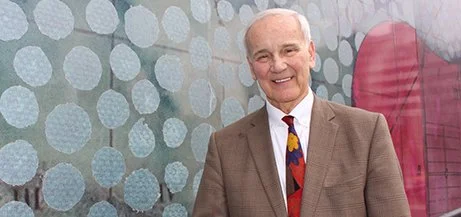From the Archives: “Shaped by What We Shape: How the Environment for Worship Affects Ritual Behavior"
Each month, our blog features articles from the archives of Liturgy. Our goal is to share the wisdom from decades past so that we might celebrate the work and insights of these excellent ministers and scholars.
Priest, architect, writer, and church designer, Richard Vosko, shows us in this essay that the spaces in which the church gathers for worship influence not only how worship unfolds but how the faith of that assembly is perceived by the worshippers and visitors. Spatial arrangements speak of welcome, hospitality, inclusion, equality among people, different roles among those in attendance, and various facets of how God works to engage the people in faith: baptismal font, place for reading scripture and preaching, and the table for the meal of bread and wine. This article invites church members to scrutinize the ways in which the placement of furnishings and objects used for worship––including musicians and choirs––articulate fundamental truths about God and God’s people.
Selected Quotes from “Shaped by What We Shape: How the Environment for Worship Affects Ritual Behavior”
~ ~ ~
Although the place of worship is frequently taken for granted, it is also an undeniably powerful part of the worship equation. Studies in the psychology of space clearly indicate that, like other spaces, the design of the place for worship affects the way people enact their rituals. Because the worship practice is organized in light of the ecclesiology of the church, the architectural setting for liturgy affirms that identity. A ritual place that sustains passivity during worship mirrors a church community where the congregants are spectators in all other affairs.
~ ~ ~
The physical setting for liturgy plays back to the assembly a picture of itself. Churches and cathedrals are not primarily thought of as museums dedicated to preserving the past. Rather, they are places for ritual making by a vibrant community; they are “living stones.” And, people can give shape to their ritual place. Thus, in the words of Winston Churchill, “We shape our buildings, and afterwards our buildings shape us.”
~ ~ ~
A congregation signals its hospitality by the way it cares for the outside of its church. It begins with sufficient parking areas, including convenient spaces for handicapped and elderly drivers. Adequate lighting provides a sense of safety and security. The walkways are maintained. Landscaping, even in wintry climates, frames the building with beauty.
~ ~ ~
In older churches and newer ones, the font is located near the main door to the church to symbolize entrance into the faith community. Traditionally the font is not located near the altar table area, which is reserved for the sacrificial banquet. One place is designed for washing and the other for listening, praying, eating, and drinking. The spatial design for these activities will naturally be very different.
~ ~ ~
Richard S. Vosko, PhD, Hon. AIA, a Catholic priest of the Diocese of Albany, has been a sacred space planner since 1970. His award-winning work is continuously acknowledged for liturgical and design excellence. The title of his book is God's House Is Our House: Re-imagining the Environment for Worship (Liturgical Press, 2006). See also www.rvosko.com.
Vosko, R.S. “Shaped by What We Shape: How the Environment for Worship Affects Ritual Behavior.” Liturgy 25, no. 1 (2009): 4–12.
If you would like access to this article, please follow this link.
